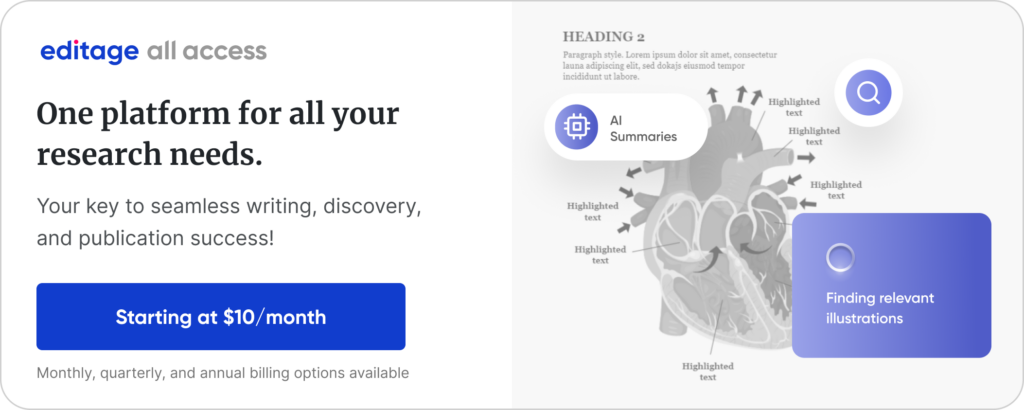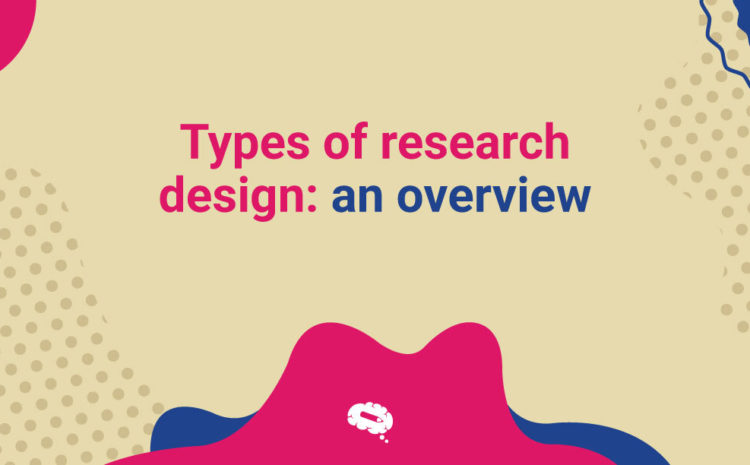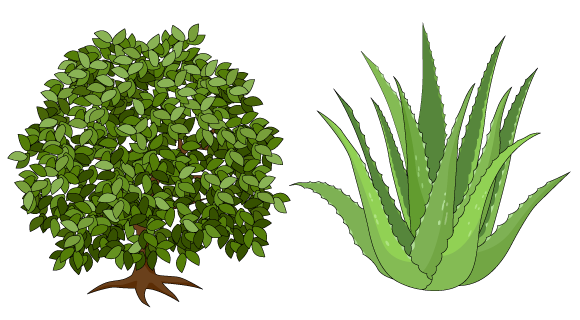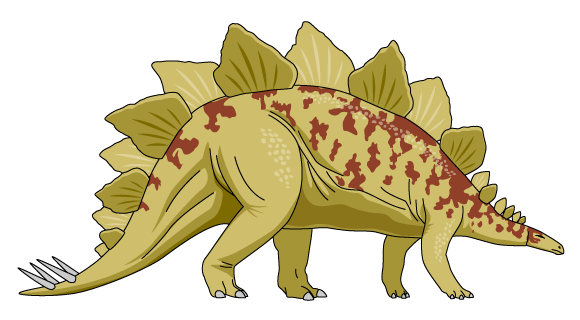The pursuit of knowledge has always taken the form of research, regardless of the subject matter. There are times when research results in breakthroughs in science, technology, or discovering new species.
Due to the current dire plight when Coronavirus is ravaging the world, scientists carried out a tremendous amount of research in order to discover a vaccine for the disease. Through this blog post, we will examine the types of research designs and their various aspects.
What is research design?
When we define research as a collection of information, taking the methodologies into account, we can see that research contains significant information about the subject.
It is a set of facts gathered through formulating a thesis and followed up with structured findings based on the same hypothesis. You can do academic research or scientific research. Let’s take a closer look at what a research design is.
Research challenges faced by organizations often influence research designs rather than the other way around. When designing a research project, the tools for use are determined as well as the way in which they are applied.
In research design, you outline a way of incorporating all elements of the study into a comprehensive and sequential framework. Through this, you ensure that your research will address the desired problem effectively.
Essentially, it lays the foundation for data collection, evaluation, and reporting. Keep in mind that the design you choose depends on the research problem!

Elements of research design: The framework
A researcher can use a research design to embark on a quest into the world of mystery, while using a structured approach along the way.
Similar decisions are made by researchers when choosing approaches from a variety of methodologies to determine the type of research to be performed, a lot like an architect determining the different design of a building.
Thus, let’s look at what are the elements which are the most important considerations that every researcher should include in their research design.
These elements are essential:
- A clear statement of purpose
- Methodology used to analyze collected details
- Types of research methods
- A list of potential obstacles to research
- Collection and analysis of research data: methods to be implemented
- An overview of the objectivity’s timeline
- An assessment of the analysis
- An overview of the study’s settings
With the elements listed above, one can develop an overall perspective of the research, as it establishes a logical structure.
Characteristics of research design: The features
Validity of any research design depends on robustness of the results. It is imperative to achieve utmost neutrality and ensure your research results against biased interpretation in order to get accurate data.
It is important that the results of your study are beneficial to a broad range of people, not just a minority. In order to verify this, you should make sure your sample size is high enough and, just to be safe, allow some room for error.
Your study’s success depends on a proper research design. Accurate and unbiased insights are provided by thorough and well-designed research studies. Four key characteristics of good research design include:
Neutrality: In the course of designing your research, it may be necessary to speculate about the type of data you are expecting to collect. Your research should produce neutral results that are free from preconceived notions (Unbiased results). Consider opinions regarding the final evaluation outcome and the derived results coming from a variety of sources and whether they are in agreement with the findings. By doing this, the research findings will be neutral, making the study more valid and reliable.
Reliability: After conducting the same research on a regular basis, results are expected to remain the same. Hence, for a high standard of results, your data collection design should include the method of developing research questions. If your design is reliable, then you can generate the anticipated results.
Validity: We have a variety of measurement tools at our disposal. Only those tools are appropriate for measuring effectiveness, which allow a research participant to determine results in accordance with the research objective. Assessments derived from this approach will then be credible and valid.
Generalization: You should not limit your study to a small group of people, but rather apply what you learned from your design to a large population. By generalizing, we mean that you can conduct your research survey at any time on any demographic group with the same degree of accuracy.
In order to create an effective research design, the factors mentioned above must be balanced among the respondents. By doing so, a more comprehensive and accurate study will be produced, one that is understandable to a larger audience.
The major categories of research design
To choose the best model for a study, it is vital that the researcher understands the different types of research design. Your design can be categorized broadly, along with research as a whole, into qualitative and quantitative, flexible and fixed.
Qualitative: research based on mathematical calculations that determine correlations between data and observations. The statistical method can be employed to prove or disprove theories that are related to phenomena that occur organically. For example, researchers use qualitative methods to determine “why” certain theories are valid, as well as “what” respondents think about it. Such information enables a researcher to come to a final understanding with sufficient evidence.
Quantitative: research that gathers empirical data in order to generate information that can be used to guide decisions. The numbers offer an enhanced perspective on making important organizational decisions. It is imperative that organizations conduct quantitative research in order to progress. Evaluation and meta-analysis of data mainly rely on graphs, figures, and pie diagrams. Analysis and information derived from precise numerical data and statistics can be extremely useful in determining the future direction of the operation.
| – QUALITATIVE | – QUANTITATIVE |
|---|---|
| Emphasizes developing theories and hypotheses. | Emphasizes on putting theories and hypotheses to the trial. |
| Performing the analysis involves summarizing, categorizing, and interpreting data. | Analyzing the data requires the use of math and statistics. |
| Most of the information is expressed in text. | The most common form of expression is with numbers, graphs, and tables |
| Answers are only required from a small group of people. | There will need to be numerous participants. |
| Explore unresearched problems and propose new solutions. | Evaluate the performance of new treatments, programs, or products. |
Fixed and Flexible Research Design
A distinction can also be made between fixed and flexible research designs. Study designs fall into two above categories: quantitative (fixed design) and qualitative data gathering (flexible design).
When you use a fixed study design, you understand the design even before the data collection process begins. There almost are no randomly selected outcomes.
On the other hand, flexible designs allow for greater freedom of response, for instance, respondents are required to provide their own answers instead of selecting from predetermined answers.
Therefore, research designs can be categorized further into five types.
1. Descriptive research design
In Descriptive Research Design, the researcher provides an in-depth explanation/description of what he or she is researching. The data collection, analysis, preparation and presentation of data is purely theoretical in this type of research design.
A theory-based approach is one in which the researcher is particularly concerned with the topic the research is focused on. The approach is used for various studies such as case studies, in-depth observations, and surveys.
It gives a researcher a logical way to state the problem so that others will be able to better comprehend the rationale for conducting this sort of research.
When you don’t have a clear problem statement, your research is exploratory rather than descriptive. A good example of this type of research design would be: What is the prevalence of Covid disease among population XYZ?
2. Correlational research design
A correlational research design focuses on the correlation between various factors without enabling the researcher to alter any of them. This type of study involves at least two different groups of data rather than an experiment.
While evaluating the association between two variables, no sweeping generalizations are made; statistical analysis is used to determine that relationship. Positive, negative or zero correlations could result from correlational study designs.
For instance, case-control studies and prospective studies can be conducted with this technique.
Data is more easily collected from the real world when using correlational research designs. Thus, your results can be applied externally in a valid way to actual scenarios.
Several scenarios lend themselves to correlational studies research, such as:
- To examine non-cause-and-effect relationships
- To investigate cause-and-effect relationships among fixed entities
3. Experimental research design
In experimental research, two sets of variables are used to determine the outcome of the study.
To gauge differences between the first and second sets, the first set serves as a constant. Field experiments, controlled experiments, or quasi-experiments are all examples of this type of research design that establish a relationship between two variables.
As a result, the investigator examines how an independent variable influences a dependent variable. For example, you can explore the relationship between price (an independent variable) and brand loyalty (a dependent variable).
Typically, a research design of this type aids in answering a research question by controlling the independent variables and studying how they affect the dependent variables.
4. Diagnostic research design
Among the different types of research design, diagnostic research is designed to discover the root cause of a particular condition or occurrence.
Finding out how specific issues or challenges are caused by other factors can help you gain a more profound understanding of your prospects’ problems.
There are usually three steps in this design – (1) inception of the problem, (2) diagnosis of it, and (3) solution of it.
5. Explanatory research design
Again, the name speaks for itself. Using an explanation research design, the researcher is able to elaborate, investigate, and explain their concepts and theories.
Research designs of this type are used to examine the unknown facets of a specific topic and uncover the answers. In a nutshell, this application provides us with information on how to locate the smallest information fragments.
By using this approach, researchers can obtain a broad idea and use that information as a way to identify future issues more rapidly. Explanatory research methods include:
- Literature analysis
- An in-depth interview
- Having a focus group
- Analyses of case studies
A researcher who replicates an existing market study expects the same results. Make a list of the types of research concerns you will ask your participants through the survey and include them in your research design.
Setting this standard will help to ensure the outcome of your research. The only way to attain the results you want is to make sure your design is reliable. When you have analyzed the topic and its innovativeness, you can decide what type of research design you want. (Read our guide on how to write a research paper)
Types of research design grouped by categories of participants
The quality of the grouping of participants can also be used to categorize research design types. The sample size and how the participants are grouped depend on the research hypothesis.
There is usually at least one experimental and one control group in a research study based on experimental design. Imagine that, in a study for Covid vaccine, one group would receive treatment and another would not. You get the idea.
There are four types of research design based on participant grouping:
1. Cohort study
Participants in a cohort study are drawn from a group of individuals with similar characteristics, and they are studied at a predetermined time intervals. There is a common characteristic(the same disease or gene) among the participants in a panel study.
2. Cross-sectional study
Research in social science, medical science, and biology often uses cross-sectional studies. Data in this design is either collected from people as a whole, or from a statistically significant sample of people at a particular interval.
3. Longitudinal study
In longitudinal research, the same variables are observed repeatedly over a short or long period of time. In most cases, they are observational studies, although longitudinal randomized experiments may also be conducted.
4. Cross-sequential study
Cross-sequential research design integrates both longitudinal and cross-sectional approaches. In this way, the two previously mentioned designs can be enhanced for some of their fundamental shortcomings.
How does it affect your work?
Research designs define a disciplined approach or method to accomplish various tasks in a research study. Designing a research project is meant to help the researcher achieve his or her objectives without deviating from the plan. The process is designed in a comprehensive manner.
The components of a high-quality research design work together harmoniously. Research objectives and outcomes must be aligned with the theoretical and conceptual framework.
- When a researcher draws up a research design (experiment design), he or she can easily formulate the experiment’s objectives.
- The goal of a good research design is to help the researcher reach the objectives in a timely manner and to enable getting the most effective solution for the research problem.
- Researchers can accomplish all the tasks they need to do with limited resources more effectively with the use of design strategy.
- As a result of a good research design, a study is likely to be accurate, reliable, consistent, and legitimate.
- From the outset of the research project, the researcher is satisfied and confident, as well as feeling successful.
- Errors are reduced, and bias is eliminated.
- The high level of detail provided at every stage of the research process makes the study more informative and effective.
- Making the correct decisions at every stage of a study is easier with a research plan.
- In this way, it can be determined which tasks are major and minor.
- Furthermore, the design enables the researcher to find an answer to the unknown and achieve a good outcome. Publication and exposure can then occur.
An excellent research design, appropriate methods and accurate data collection are essential to your study’s success. Additionally, the sources you use for your analysis should be credible.
Only then can you make valid, reliable inferences. There’s no doubt that research has the potential to lead to solutions to virtually every problem in the world.
Understanding types of research design is essential to conducting your thesis as it will help you to gain a greater insight into any topic you are researching.
Final note
It is important to remember that the research design constitutes the blueprint for your study. All the necessary foundations for the research will be laid in this design and it will bring out more positive results. Write all the questions, objectives and audience that will take part in the discussion.
Here’s hoping that this guide made research design easier for you.
Yet guess what, it’s much easier to start working with a template, right? In fact, Mind the graph is your one-stop solution. We provide templates, graphical illustrations, and everything you will need for your scientific endeavors. To know more find us here.

Subscribe to our newsletter
Exclusive high quality content about effective visual
communication in science.




